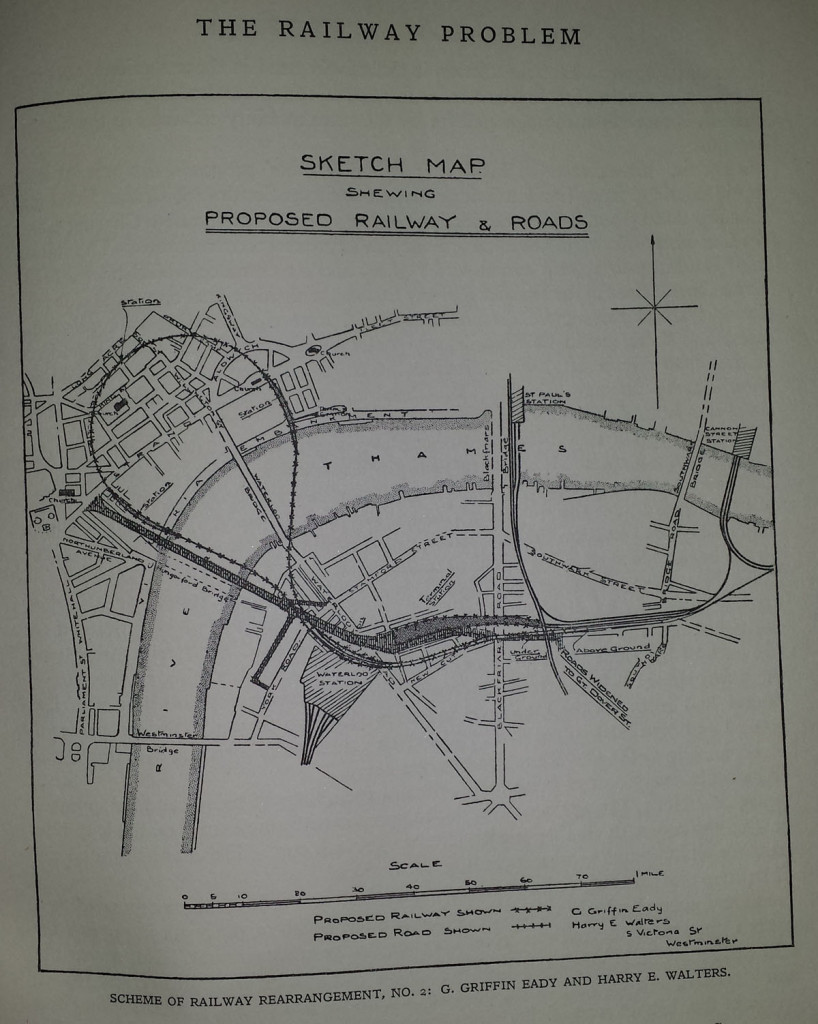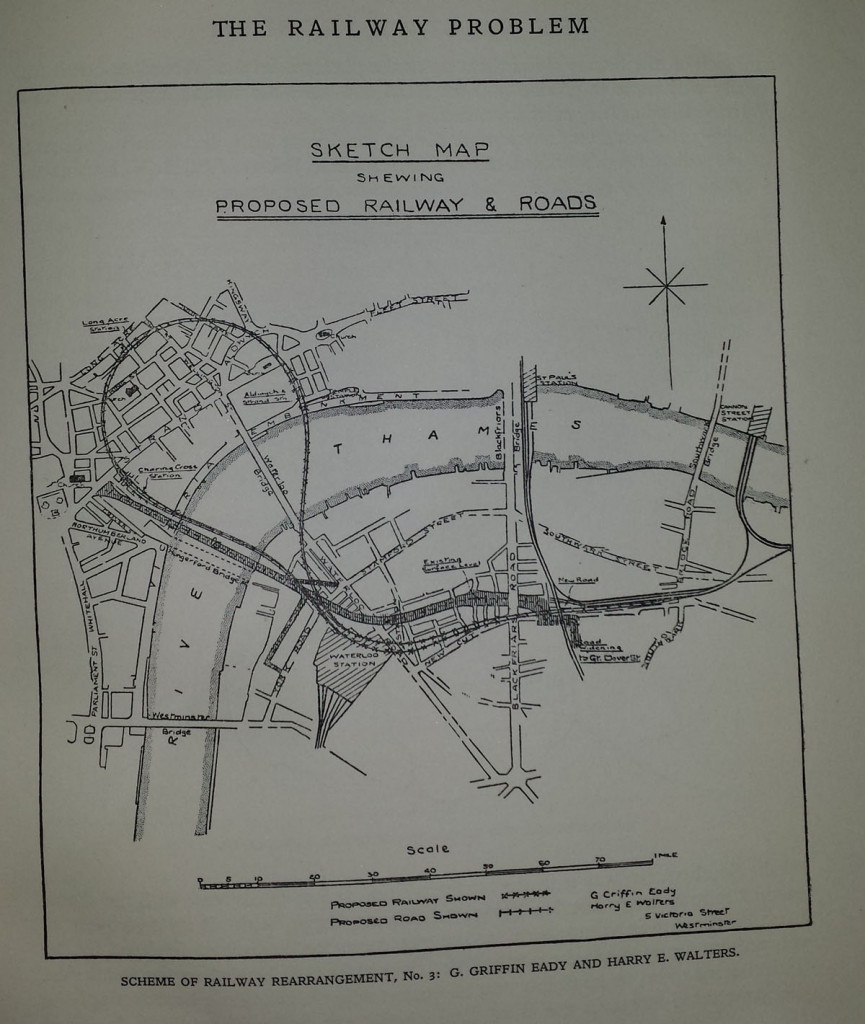Imagine a tube tunnel running under Southwark and the City, but carrying full-size mainline trains — and you would be imagining something that was actually proposed.
At the turn of the last century, there were serious attempts to get rid of Charing Cross station, and the railway leading up to it. One of the various proposals would have seen trains from London Bridge dive down into a series of tube tunnels, and loop under Southwark towards Charing Cross, then back to London Bridge via the north side of the Thames.
Today, the notion of replacing the six platforms at Charing Cross with a single tube station would seem barmy, but at the time of the proposals, trains were increasingly seen as the past, and the motor car was the future, so it was seen as a time to shrink the railways.
In fact, as noted in the report, by Arthur Keen, terminus stations are inherently inefficient and would be better replaced with through lines under London, or loops, so that trains don’t have to stop and turn around. Of the reports many crazy ideas, that comment is about the only sane thing in the entire book.
One of the proposals came from a Mr W.R. Davidge, which sent the railway underground, with a station at Blackfriars Road, one at Waterloo Station, and then on the north side of the river, at Charing Cross, one at Temple, and one at Blackfriars.
In this plan, not only is Charing Cross mainline station demolished but so is Cannon Street station, as both would be served by the new loop railway. The architect felt that the cost of the tunnels and new stations would be covered by the proceeds of selling the land currently occupied by the railway viaducts in Southwark.
Meanwhile, a duo of Mr G. Griffin Eady and Mr H.E. Walters devised three possible loop railways.
All three were variants on the same, basically a much smaller loop running towards Charing Cross and back again, with just some minor differences. The main one is the provision, or not, of terminus platforms at Waterloo so some trains could stop there and reverse back down the tunnel.
The new station at Embankment would have been under glass, which would have been a dramatic sight at the time. The cost of the three schemes came in at around the £10 million mark.
Of course, the railway tunnels were never built, and Charing Cross remains in situ today, along with the railway line snaking through Southwark.
But how different would the whole area look if it weren’t demarcated by a noisy railway line?











Interesting find! Could you provide the reference for the report so that others can read it in full please?
It’s still a problem that bugs railway operations: that’s exactly why Crossrail is being built, to stop suburban trains congesting Paddington and Liverpool Street stations by letting trains run right through, and distributing traffic through the centre of the city. This system probably had a loop only because there was no railway company that operated on both ends of the city.
So the line would stop at all the important city terminals, potentially have a high (Thameslink style) throughput in the modern age, and free up space. I don’t think it was that barmy an idea (for the time), although the stations would have been too small for modern throughput (as it was designed for a future where cars ruled) and London Bridge has more than 30tph going through it in each direction (terminating and through to CX, CS, BF).
Maybe it’s time to engage the crayonistas with a direction to turn Waterloo from a terminus into a through-to-liverpool-street-and-beyond system, possibly incorporating the W&C line (well, tunnelled beside it). You’d have to negotiate the Jubilee line (go over), the circle (go under), the central and xr1 (um, maybe over by this stage?).
I have always been surprised that there don’t seem to be plans to take the remaining (non-Thameslink) traffic from London Bridge and tunnel it through to link to the Euston suburban traffic, taking over all trains as far out as Milton Keynes and releasing valuable platforms in Euston (as well as eliminating Charing X)
Similar to what they actually built in Liverpool.